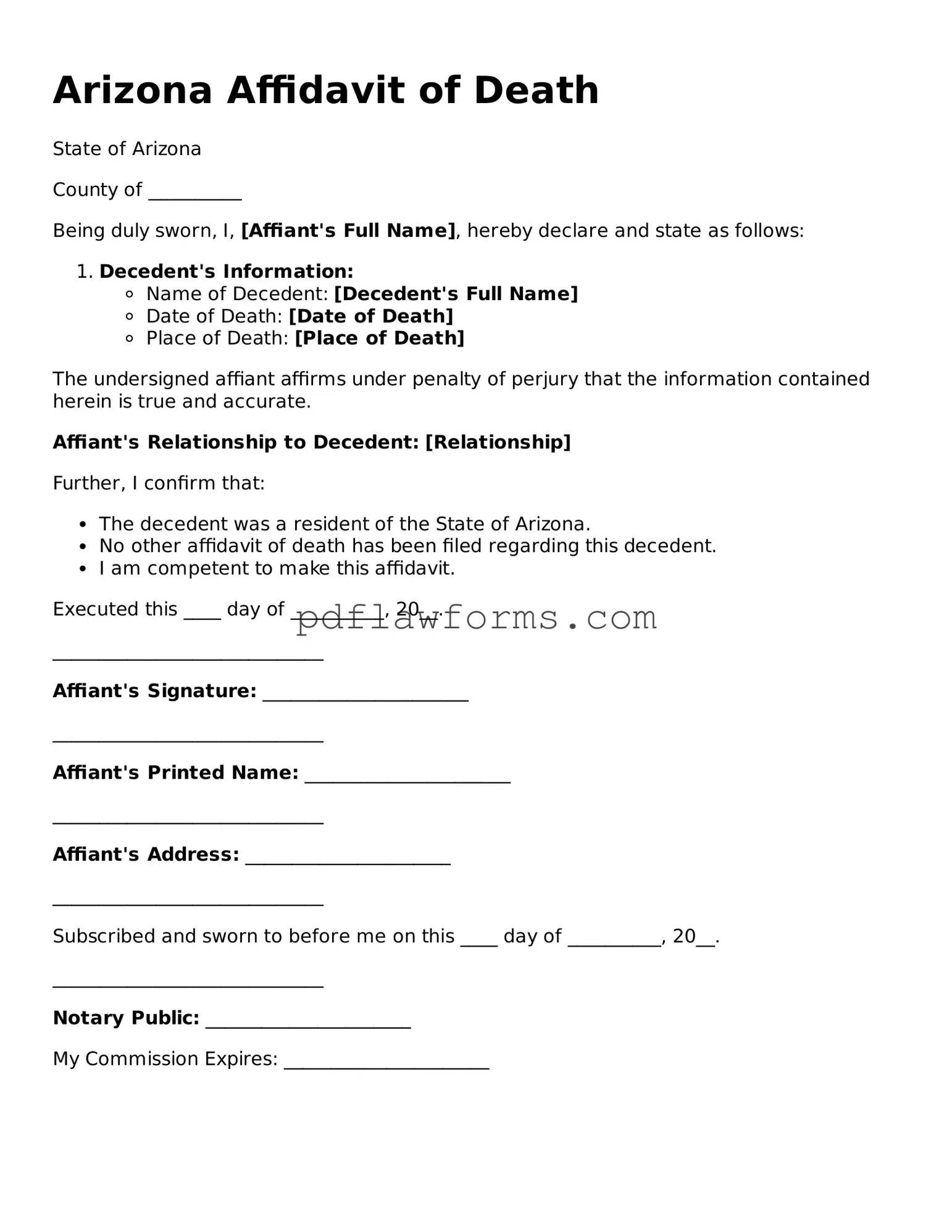Filling out the Arizona Affidavit of Death form can be a daunting task, especially during a time of loss. Mistakes can lead to delays in processing or even complications in settling the deceased's estate. Here are seven common mistakes people make when completing this important document.
One frequent error is providing incomplete information. Each section of the form requires specific details about the deceased, such as their full name, date of birth, and date of death. Omitting any of this information can result in the form being rejected or returned for corrections.
Another mistake involves incorrect dates. It is crucial to ensure that the dates entered on the form are accurate. A simple typo can lead to confusion or legal issues later on. Double-checking the dates against official documents can help avoid this pitfall.
People often forget to sign the form. A signature is essential for the affidavit to be valid. Without it, the document cannot be processed. Ensure that the signature is placed in the designated area, and remember that it may need to be notarized as well.
Additionally, some individuals may not understand the importance of notarization. The affidavit must be notarized to be legally binding. Failing to have the document properly notarized can render it ineffective, which can complicate the estate settlement process.
Another common oversight is using incorrect terminology. The form requires specific language and phrasing. Misusing terms or failing to adhere to the prescribed format can lead to confusion and may cause delays in processing the affidavit.
People sometimes neglect to review the completed form before submission. Taking a moment to read through the entire document can catch errors or omissions that may have been overlooked. A thorough review can save time and prevent unnecessary complications.
Lastly, some individuals may not provide supporting documentation when necessary. Depending on the circumstances, additional documents may be required to accompany the affidavit. Not including these documents can lead to delays and additional requests for information.
By being aware of these common mistakes, individuals can approach the Arizona Affidavit of Death form with greater confidence. Taking the time to ensure accuracy and completeness can ease the process during a challenging time.
